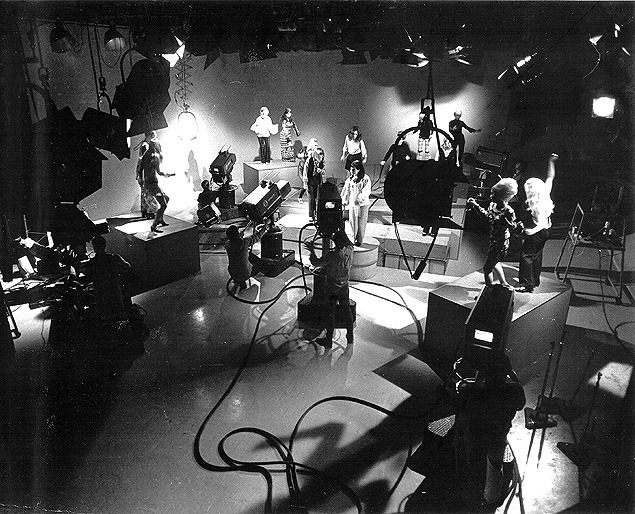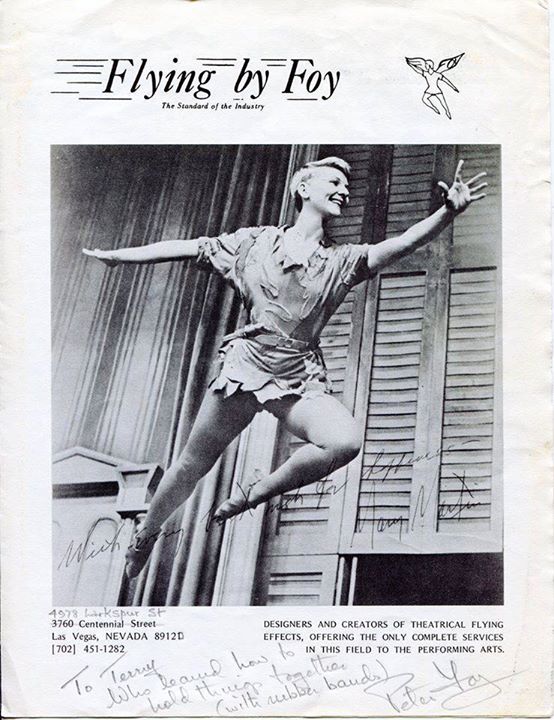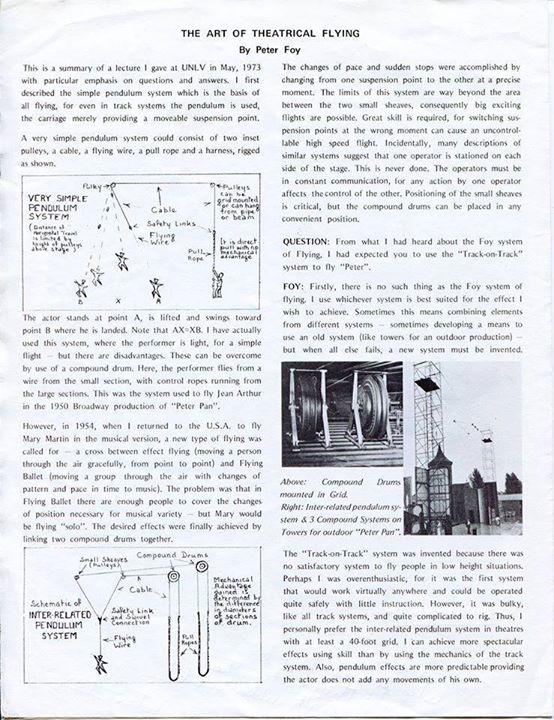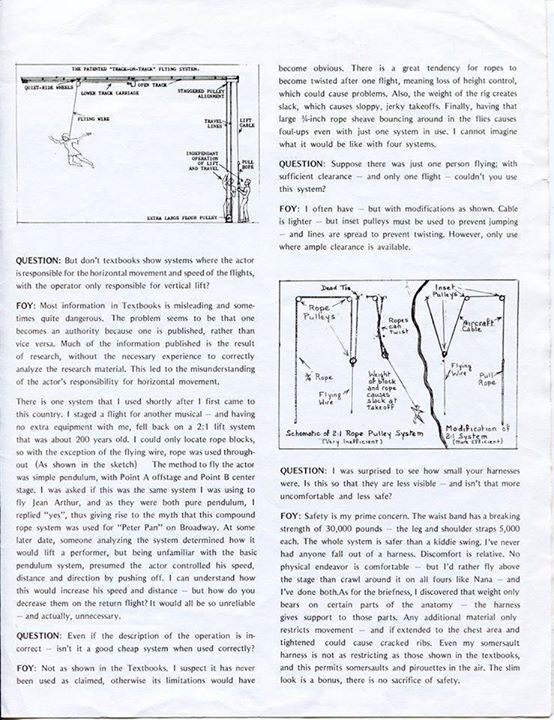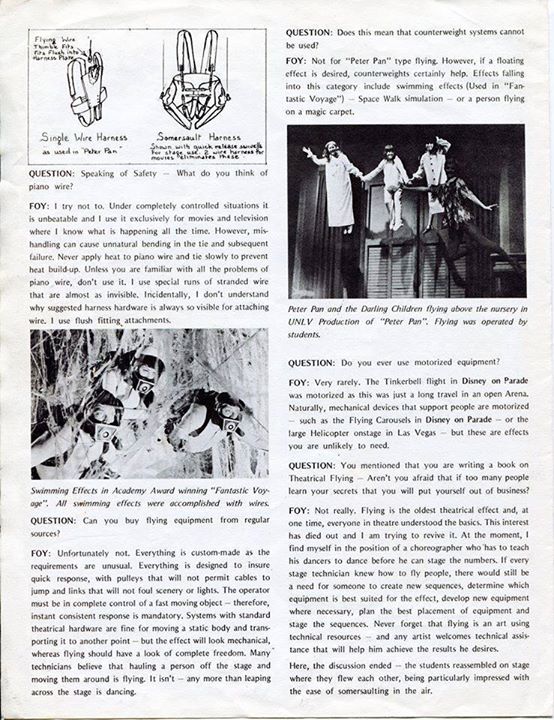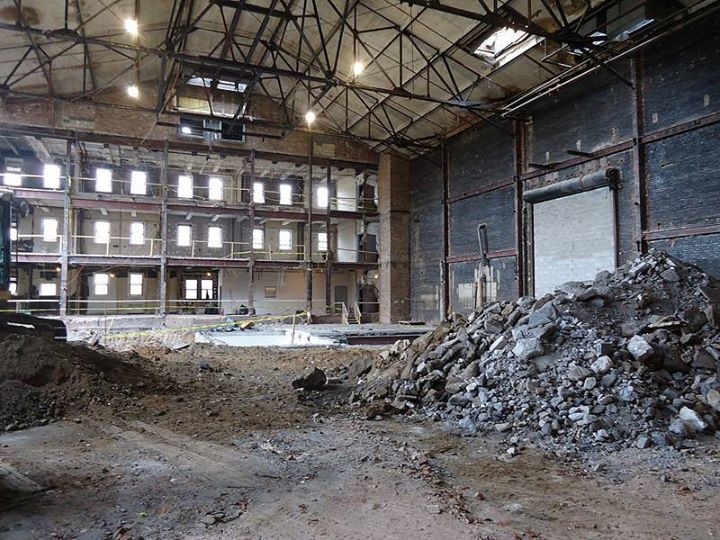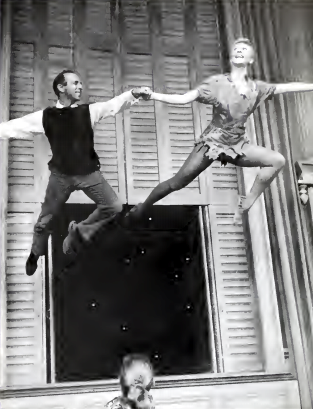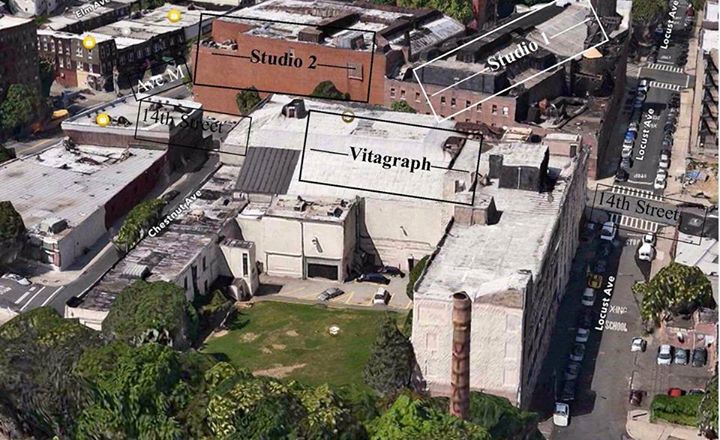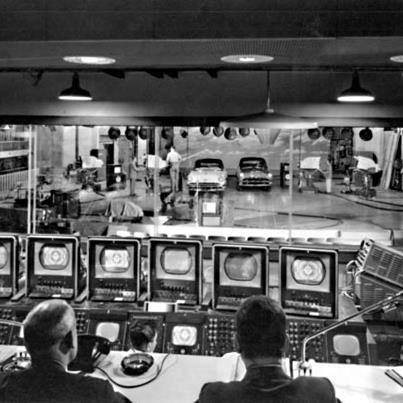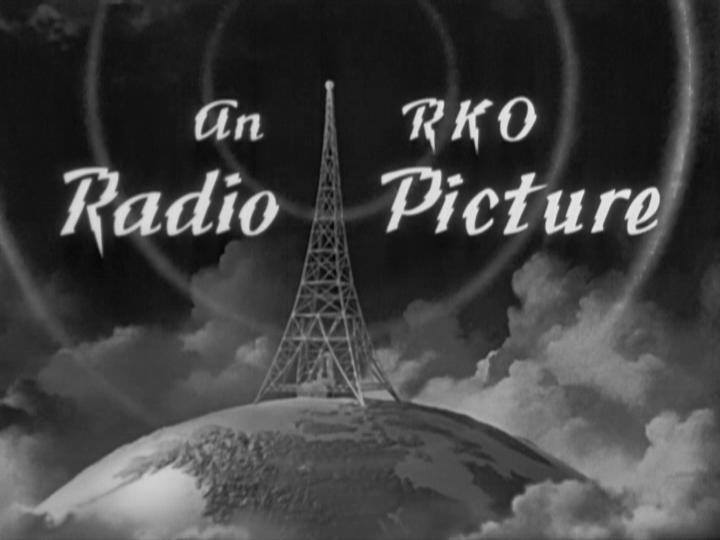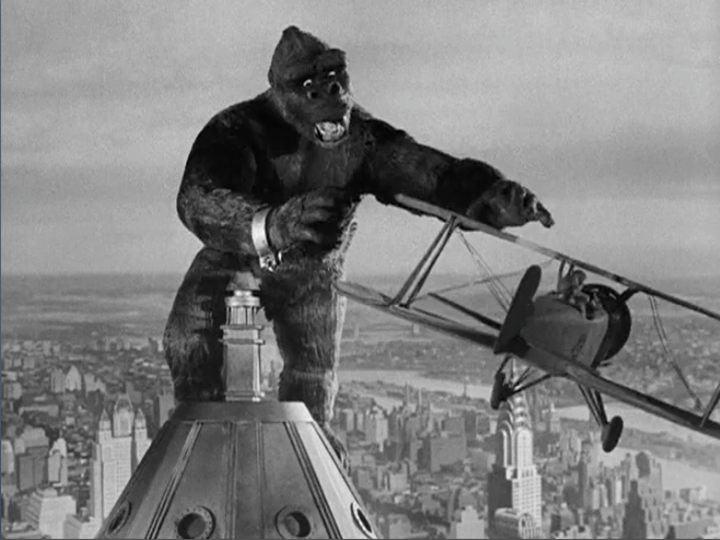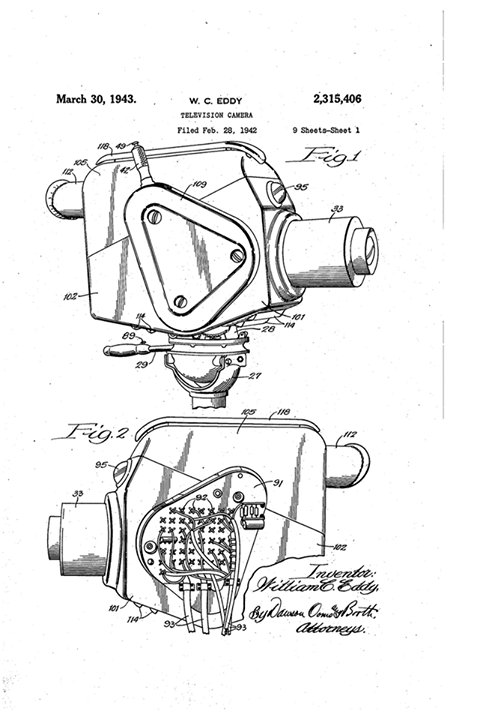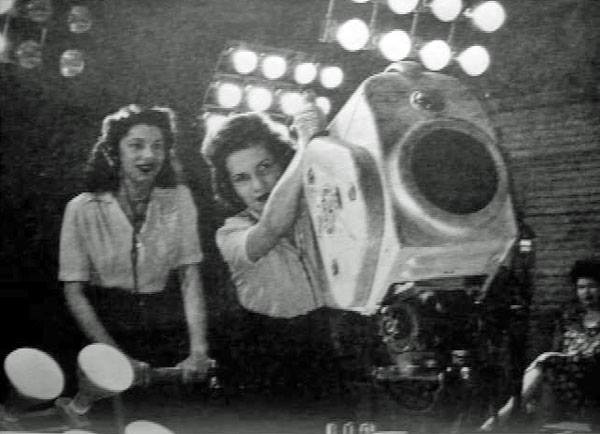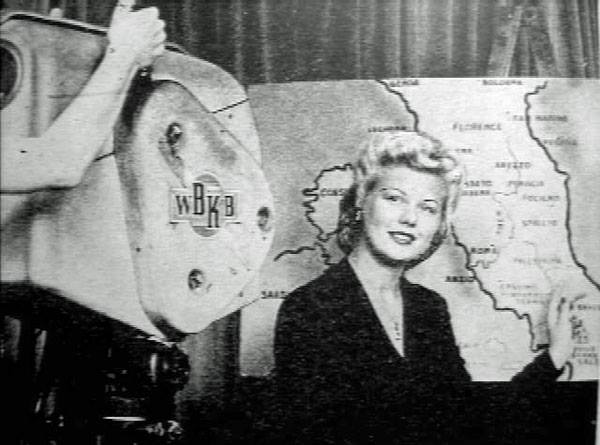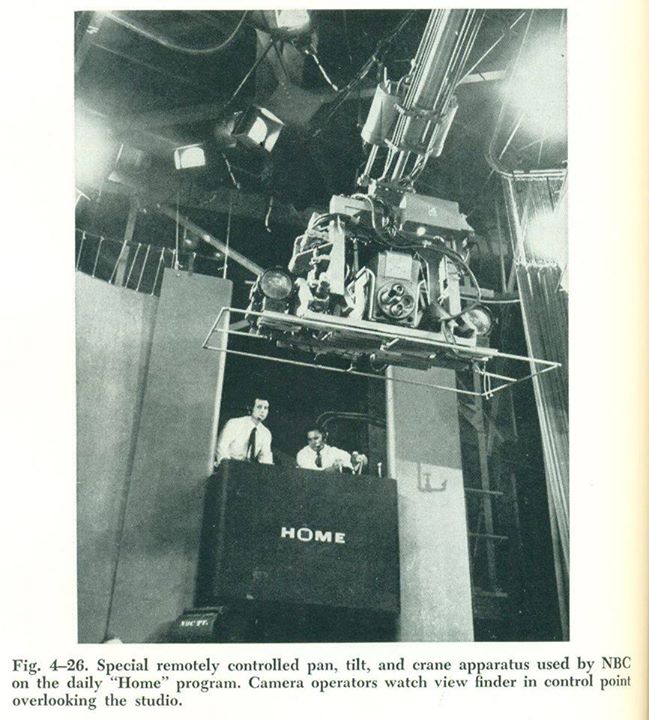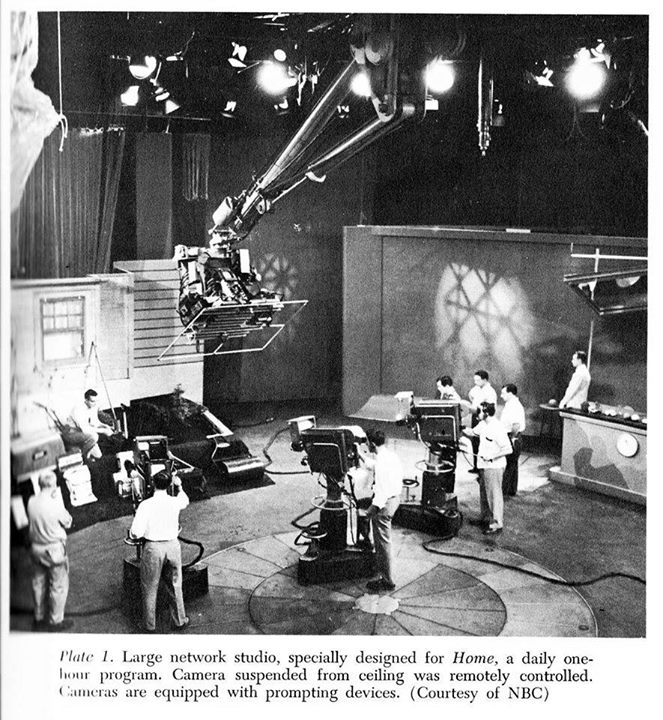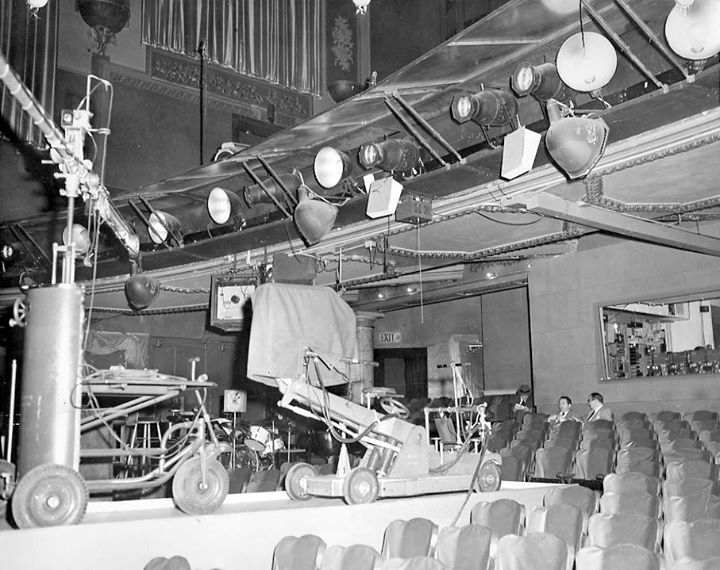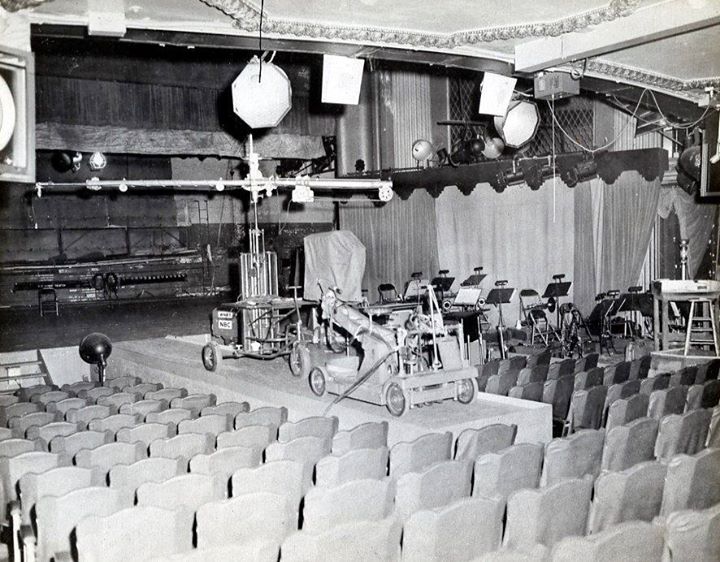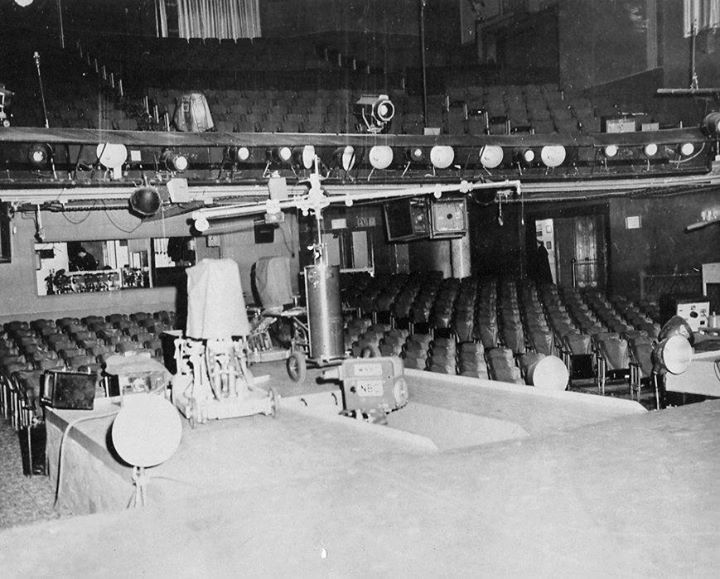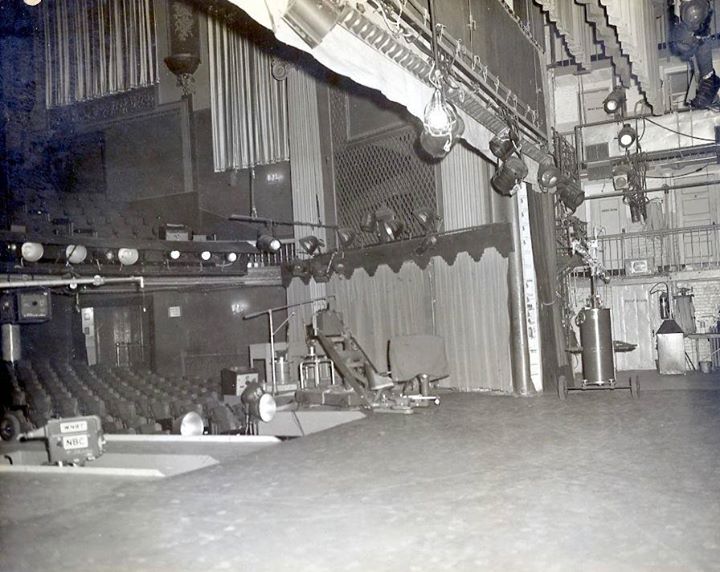- Home
- TV History
- Network Studios History
- Cameras
- Archives
- Viewseum
- About / Comments
Skip to content

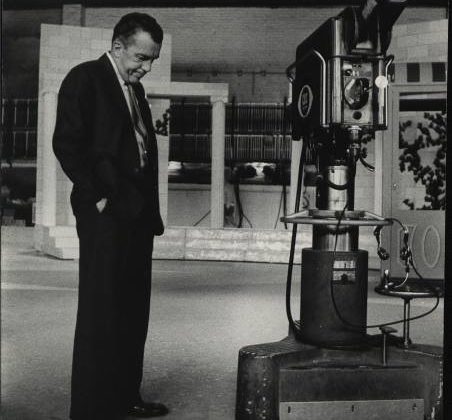
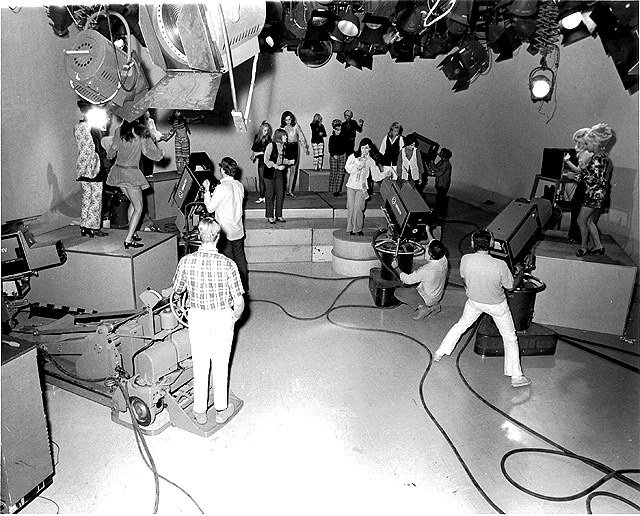
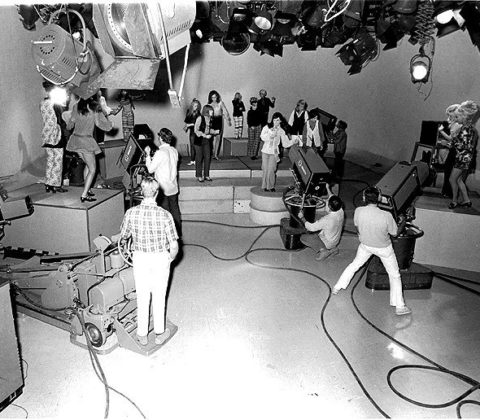
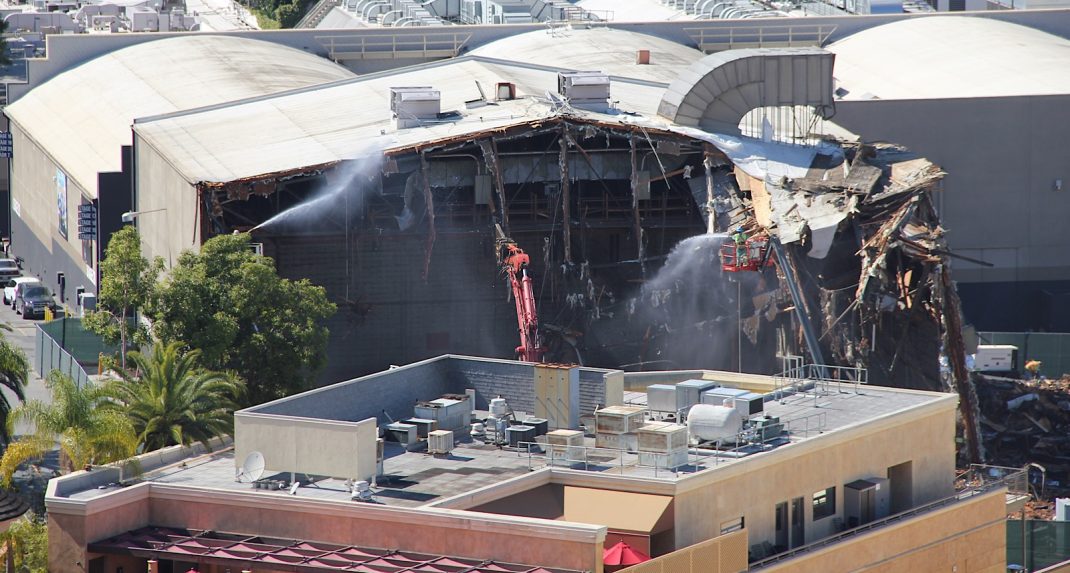
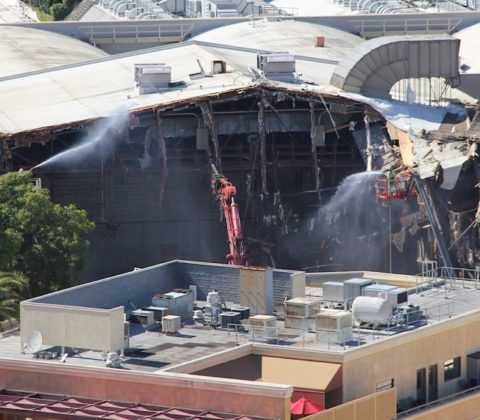
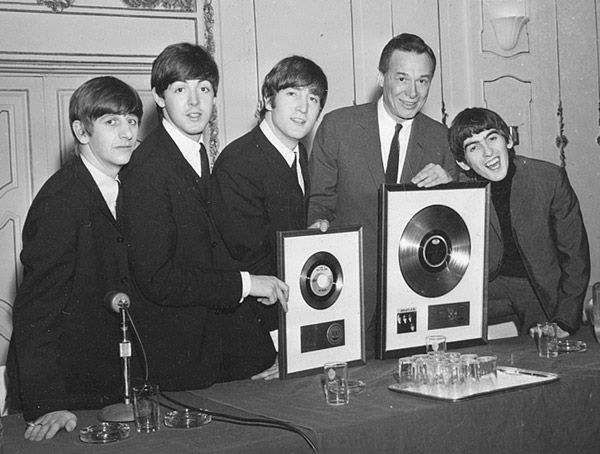

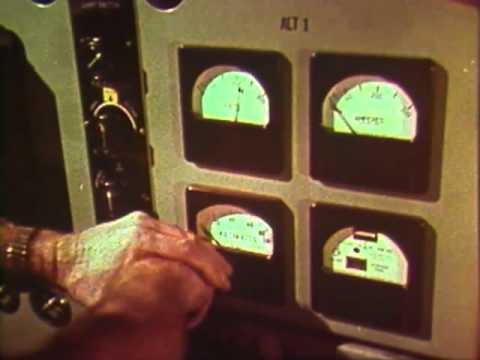

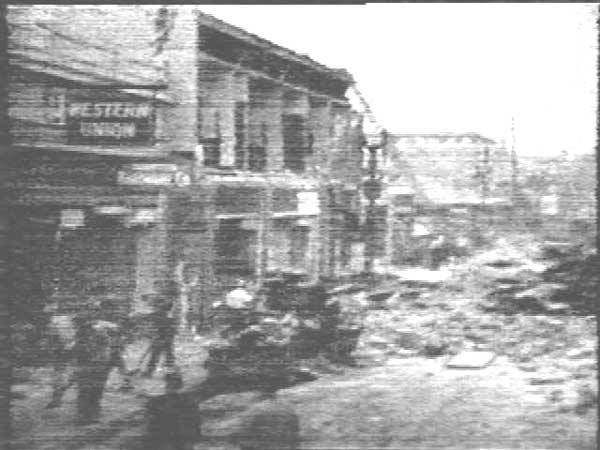
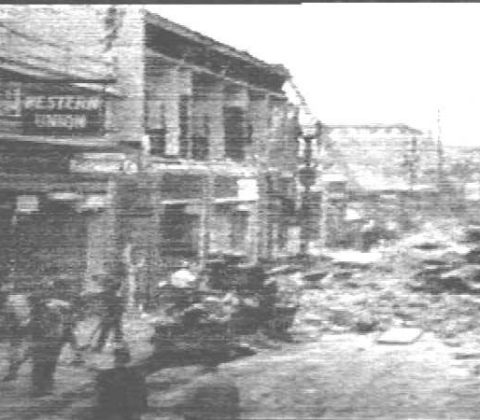
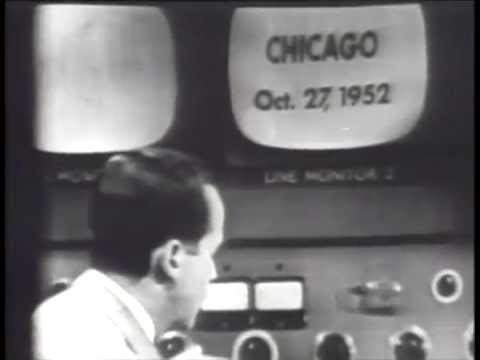
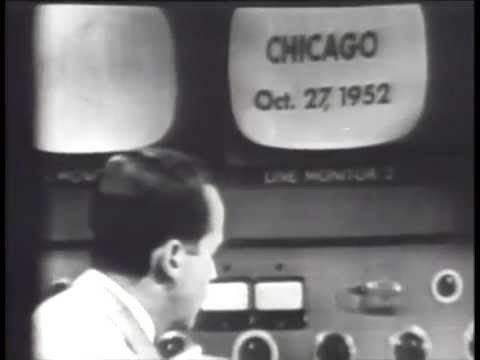
Good night, and good luck.”
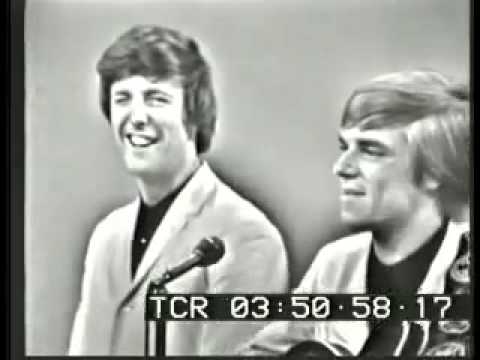
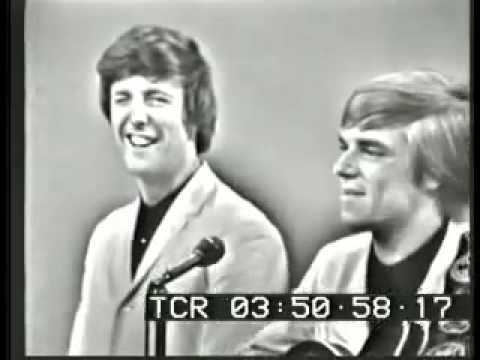
Source

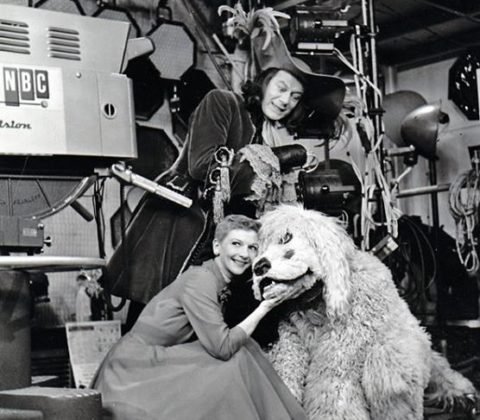
Peter Foy was the man responsible for the “flying” effect that all of us, of a certain age, remember with great fondness. Flying one person gracefully is an art…flying four at a time is magic!
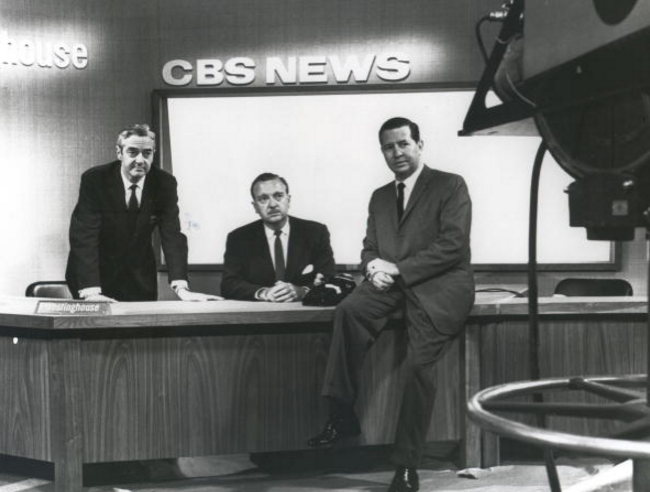
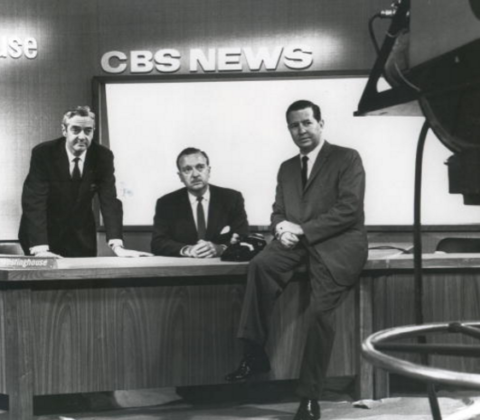
As great as the facility was, it sat empty most of the time as CBS did not do a lot of color shows, and the bulk of their colorcasts came from Television City. Occasionally the network used it for big stage productions, but the signals were sent out minus the color burst, and was seen in black and white.
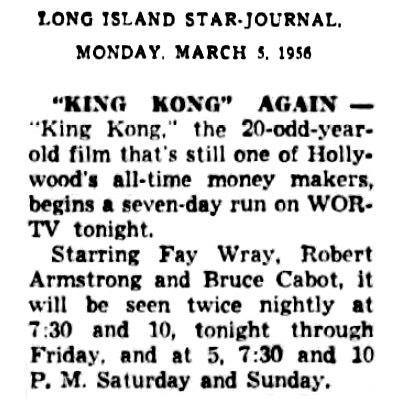

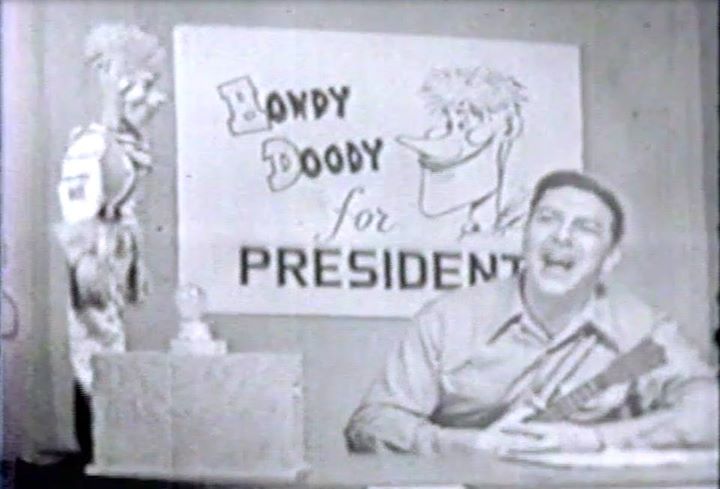
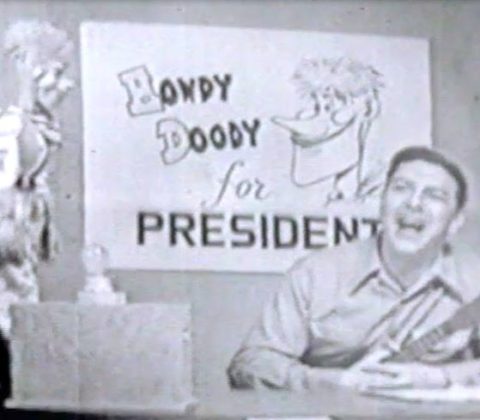

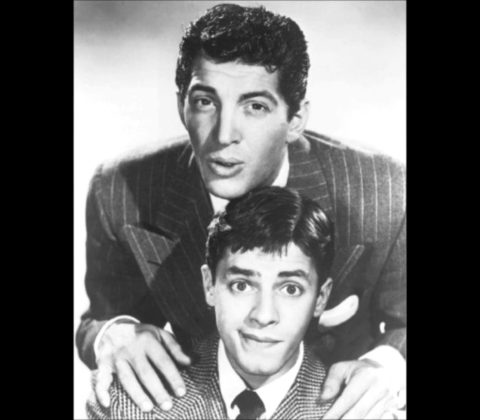
In 1948, CBS had begun their talent raids on NBC, bringing over bellwether shows and acts like “Amos ‘n’ Andy”, Jack Benny, Red Skelton and more, which left big holes in NBC’s radio schedule.
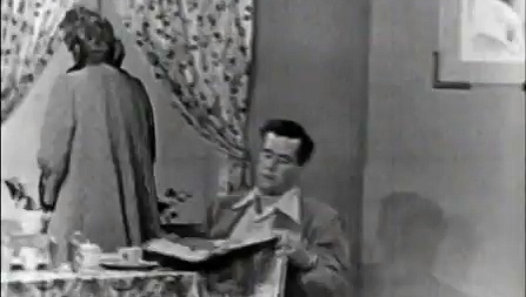
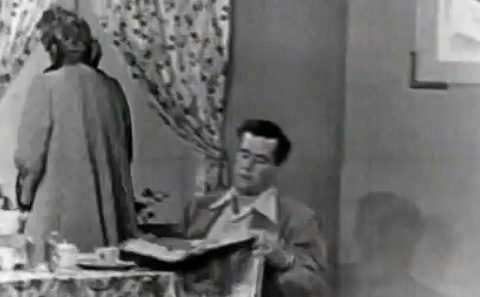
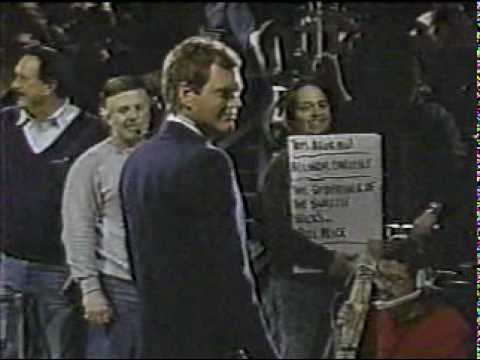
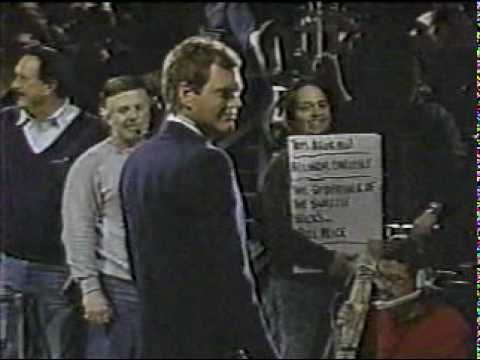
Source
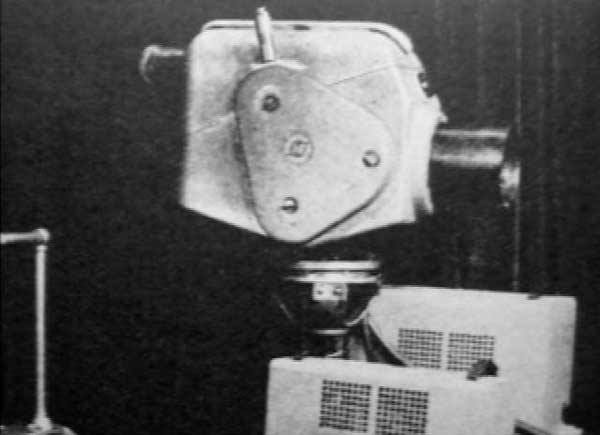
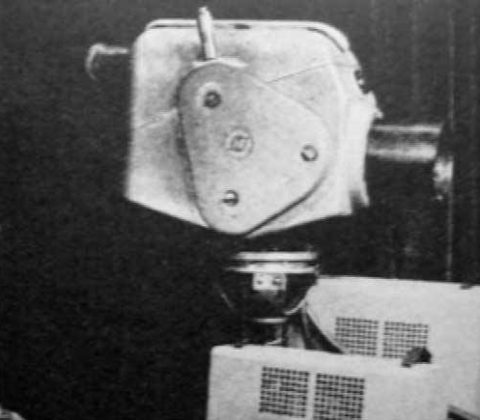
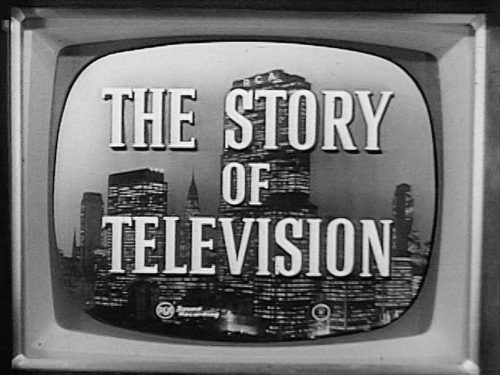

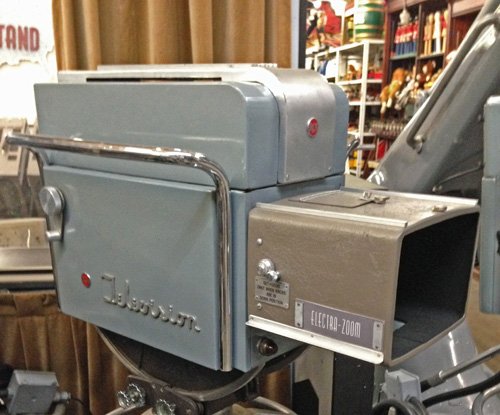

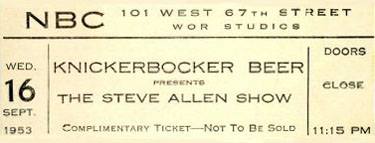

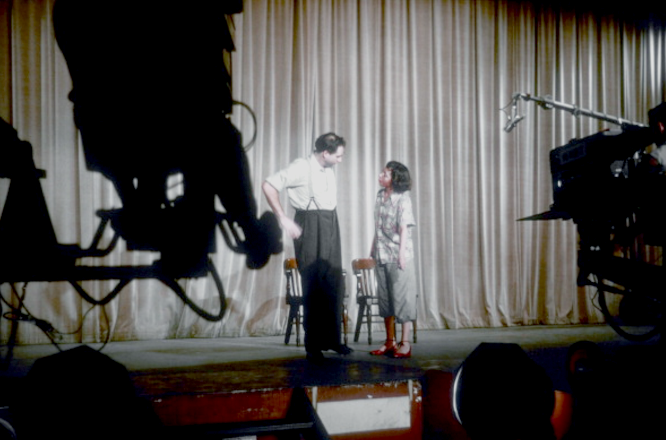

Posts in Category: TV History
Page 3 of 136
« Previous
1
2
3
4
5
6
7
8
9
10
11
12
13
14
15
16
17
18
19
20
21
22
23
24
25
26
27
28
29
30
31
32
33
34
35
36
37
38
39
40
41
42
43
44
45
46
47
48
49
50
51
52
53
54
55
56
57
58
59
60
61
62
63
64
65
66
67
68
69
70
71
72
73
74
75
76
77
78
79
80
81
82
83
84
85
86
87
88
89
90
91
92
93
94
95
96
97
98
99
100
101
102
103
104
105
106
107
108
109
110
111
112
113
114
115
116
117
118
119
120
121
122
123
124
125
126
127
128
129
130
131
132
133
134
135
136
Next » 

March 1971…The End Of An Era: Ed Sullivan Canceled By CBS
On March 15, 2017
- TV History
March 1971…The End Of An Era: Ed Sullivan Canceled By CBS
Ed Sullivan began with CBS in 1948, when he was hired to host their first variety show endeavor called “Toast of the Town,” which debuted on June 20, 1948. Sullivan assembled a show for the launch that included the budding comedy act of Dean Martin and Jerry Lewis, Rodgers and Hammerstein, a pianist, a ballerina, a troupe of crooning firemen and a boxing referee whose next assignment was the much anticipated Joe Louis – Jersey Joe Wolcott match the next week.
The first five years of the show came from the first theater CBS had converted for television, The Maxine Elliott Theater, which was designated Studio 51. Still titled “Toast of the Town,” the show moved from Studio 51 to Studio 50 in January of 1953. At the start of the eight season, on September 18,1955, the program was renamed “The Ed Sullivan Show.”
I don’t have to tell you how much history was made on this show, because you already know. Everyone does, but…
Towards the end of the show’s 23 year run, with the country divided by the Vietnam War and polarizing values, the show’s format had lost much of it’s wide range of demographic appeal. In it’s heydays, Sullivan and company had owned the 8 o’clock Sunday night slot, and although occasionally someone could beat their ratings, like “Maverik” or “The Steve Allen Show”, Sullivan always came back. By this time though, counter programming from NBC’s “Wonderful World Of Disney,” and ABC’s “The FBI,” were gaining on the show.
When producer Bob Precht got the call from CBS president Bob Wood, he was in an edit session. When Wood delivered the news, it wasn’t a total surprise to Precht, but it was to Sullivan who did not take the news well.
Bob called Ed at his Delmonico suite with the news and Ed took it as yet another example of the network’s lack of respect for him. “Well I’ll be a son of a bitch…after all I’ve done for the network over the years”, was Ed’s reply.
Precht (who is also Sullivan’s son in law) had already been reading some of the handwriting on the wall. When CBS did not renew “The Red Skelton Show” and canceled “The Jackie Gleason Show” in 1970, that was a warning signal, but around the same time Ed’s show was canceled, so was “The Beverly Hillbillies”, “Green Acres”, “Petticoat Junction” and “Hee Haw”. It was the CBS “rural purge” that was based on the idea of dumping the older, less affluent demographic and shooting more for the younger demo that advertisers would pay more for.
Unfortunately, there is a more heartbreaking side to the story. In what is a very personal and difficult topic for many of us that have experienced the effects of dementia with a loved one, the Sullivan show family was there too.
Edward Vincent Sullivan died October 13, 1974, at New York’s Lenox Hill Hospital. His funeral was attended by 3,000 at St. Patrick’s Cathedral, New York, on a cold, rainy day. Sullivan is interred in a crypt at the Ferncliff Cemetery in Hartsdale, New York.
Although gone, as long as there is such a thing as television and people to study its history…he will never be forgotten. Long Live The King! -Bobby Ellerbee


March 14, 1970…Music-Television Debuts 11 Years Before MTV…
On March 14, 2017
- TV History
March 14, 1970…Music-Television Debuts 11 Years Before MTV
On Saturday, March 14, 1970, music shows on television changed forever when “The Now Explosion” debuted on Atlanta’s WATL.
Until then, all there had been were teen dance shows like “American Bandstand”, artist appearances on variety shows and ABC’s “Shindig” and NBC’s “Hullabaloo”, which were both gone in just over a year.
One revolutionary part of “Now Explosion” was the fact that it was created to turn struggling UHF TV stations into Top 40 radio stations each weekend. The other revolution was in the production.
The show was created by Bob Whitney, who I spoke with while researching this. Bob had started in broadcasting as a disc jockey, but by the late 60s, was GM of Philadelphia UHF television station owned by Daniel Overmyer. The idea of a video type radio show had been in Bob’s head for a couple of years. UHF stations had notoriously low viewership and a weekend music show like this could attract the younger demo and, fill vast swaths of weekend programming time with an idea youth market advertisers should flock too. http://www.thenowexplosion.com/dallas/
At the link above, you’ll see photos of the pilot being shot at WFAA in Dallas October 18-20, 1969. In early 1970, Bob moved from the US Communications UHF station in Philadelphia to it’s sister UHF station in Atlanta and production started for the March debut.
Before we get to far into this, I need to remind our younger readers,
that back then, there were NO artist performance videos available for rebroadcast by a third party. That meant that the “Now Explosion” people had to make videos to accompany each song…on their own with virtually no help from the acts or record companies.
The show came about in the thick of the psychedelic era and this influence was not lost on the production crews and staff. There was a lot of multi camera zooms, pans and fades and advance uses of video feedback. Below is one of the shows most popular music tracks, and their first to feature the video feedback technique. It’s Norman Greenbaum’s “Spirit In The Sky”
The video feedback effect was achieved by, in this case, shooting a dancer in the studio with one camera, then with another camera shooting a monitor shot of the image and mixing the two. The original video and the newly captured pictures from the monitor were combined with a video switcher to create an “infinity” effect as same video repeated itself in a seemingly endless visual loop.
The special effects used in “The Now Explosion” were crude, but state of the art for the early 1970s era. Remember, video tape editing was still quite complex and expensive, so most of these tape sessions were done on the fly with no rehearsals, and only a rough idea of how they wanted the video to look.
Most performers were young amateurs recruited from the Atlanta audience, with many found at Piedmont Park and on “the strip” which ran from 10th to 14th Street along Peachtree Street.
Many appeared with home-grown costumes – often after midnight when station facilities became available. Concert lighting was also used which included the liquid looking electronic collages popular in the day. Collage operators were able to produce complex lighting effects with projectors that were not possible using the video technology of the day.
I remember watching this show and my favorite video was their filmed version of “The Long And Winding Road” which represented another aspect of the show’s productions…story videos shot on film. Bob Rector shot this and many like it as he was the main film story man.
The show ran for 13 weeks on Atlanta’s WATL, where it aired 28 hours each weekend. Programs were bicycled to stations on 2 inch videotape and played back for extended periods from one to six hours.
WPIX-TV in New York played five hours of “The Now Explosion” surrounding telecasts of New York Yankees baseball games in 1970. Stations in Philadelphia, Washington, D.C., San Francisco, Sacramento and Boston had also picked up the show.
After 13 weeks at WATL, Ted Turner contracted to carry the program for a television station he had recently acquired, WTCG-TV, Channel 17.
WATL closed down shortly afterward. The move had also shifted production Fort Lauderdale, where Whitney established a new home production base. Program segments were produced at Miami Teleproductions and 2 inch video editing was undertaken at Videotape Associates in Ft. Lauderdale (now VTA of Atlanta).
After 26 weeks in syndication in early 1971, Whitney cancelled the show when the high costs of production and distribution outpaced the commercial revenue.
The first video disc jockeys were in fact, my old friend “Skinny” Bobby Harper and Bob Todd in Atlanta, both from WQXI Radio. When the show moved to Ft. Lauderdale, my other old friend Rick Shaw took over.
There is much more to see and experience and here are some links. The main web page: http://www.thenowexplosion.com/
The FB page: https://www.facebook.com/groups/thenowexplosion/
Thanks to Bob Whitley and “The Now Explosion” staff and crew for being ahead of their time, and for some fond memories for those of us fortunate enough to have seen the show. -Bobby Ellerbee


Universal Studios…4 Stages Torn Down And 10 More To Go
On March 14, 2017
- TV History
Universal Studios…4 Stages Torn Down And 10 More To Go
Recently Stages 22, 23, 24 and 24 were demolished and will not be rebuilt, but the article seems to indicate that the next 10 on the chopping block will be rebuilt on the lot, further from the theme park area.
As a tribute, here are some of the major films and shows done in each of these first four to go, and remember…the famous “Phantom Of The Opera” studio, Stage 28 was demolished in 2014.
Studio 22: “Abbot & Costello Meet Frankenstein”, “To Catch A Thief”, “Thoroughly Modern Millie”, “Airport”, “Play Misty For Me”, “The Sting” and “Murder She Wrote”.
Studio 23: “Harvey”, “Marcus Welby, MD”, “Emergency”, “Incredible Hulk”, “Jurassic Park” and “CSI”.
Studio 24: “Ma And Pa Kettle”, “Pillow Talk”, “Here’s Lucy”, “Airwolf”, “The Flintstones Movie”, “National Treasure” and “Pirates Of The Caribbean”.
Studio 25: “Ellery Queen Mysteries”, “The Blues Brothers”, “Simon & Simon”, “Quincy ME”, and “Meet The Fockers”
At the link is a list of all the Universal Stages…just click on one and it opens to a separate page for each. -Bobby Ellerbee
http://www.thestudiotour.com/ush/frontlot/soundstages.php
Soundstages 22, 23, 24 and 25 have been demolished at Universal Studios – Inside Universal
Soundstages 22, 23, 24 and 25 on the Universal lot have been demolished. These demolitions are part of the studio’s new five-year plan that aims to revitalize and modernize Universal’s backlot facilities.


What Do “Bonanza”, The Beatles And Bozo Have In Common?…
On March 13, 2017
- TV History
What Do “Bonanza”, The Beatles And Bozo Have In Common?
Aside from the letter “B”, the amazing Alan Livingston…that’s what!
If you don’t know who he is, you are not alone, but he – alone – touched the lives of literally all of America’s children, teens and adults in some very important and, above all, entertaining ways.
At Capitol Records, Alan Livingston created the character of Bozo The Clown, revived the carrier of Frank Sinatra, signed The Beatles and The Beach Boys, and…as an NBC Programming executive, hired David Dortort to write the pilot episode of “Bonanza”.
While growing up, Alan took saxophone and clarinet lessons, and his brother, Jay Livingston studied piano. Jay’s writing credits include “Buttons and Bows,” “Mona Lisa”, “Silver Bells”, “Tammy” and “Que Sera, Sera” and more. These, and a surprise that will come below, were co written with his wring partner Ray Evans.
While at the University of Pennsylvania, Livingston and his brother paid expenses by forming an orchestra that played at fraternity dances and school events.
After serving in the Army as a second lieutenant during World War II, Livingston made his way to the west coast where he finally convinced Capitol Records to give him a job. In 1946 Alan was hired to launch a series of storytelling records with illustrated read-along books for children. He called the new concept a “record-reader.”
After writing “Bozo at the Circus,” Livingston worked with an artist to create the clown narrator – a composite design of Livingston’s based on various clown pictures – and he hired former circus clown and cartoon voice-over artist Pinto Colvig to supply Bozo’s voice. The Bozo music was produced by Billy May and Bozo was a big hit, with the series reportedly selling more than 8 million copies over the next several years and spawning Bozo merchandise and Bozo-hosted TV shows. The first of which starred Colvig on KTTV in Los Angeles. By the way, Capitol later sold the Bozo rights to Larry Harmon, who once claimed to have created Bozo, but he eventually set the record straight by crediting Livingston.
Other Livingston-written and produced children’s recordings that allowed Capitol to dominate the children’s record market followed, featuring Woody Woodpecker and various Disney and Warner Bros. cartoon characters.
The next major phase of Alan Livingston’s success came with his
a promotion to vice-president of Capitol. He went from overseeing children’s records to working with adult artists such as Nat King Cole, which yields yet another surprise! “Mona Lisa”.
His songwriting brother Jay had written a song Alan felt was a hit, and very will suited for Cole, but Nat did not care for it. Alan was careful not to make a big deal over it, but kept suggesting and eventually Cole agreed to cut is as a B side of a song Nat thought would be a hit. DJ’s liked the B side better, and before you knew it, the song was Number One, and held there for eight weeks.
Not long after that, Livingston got call from Sammy Weisbourg, who was president of the William Morris Agency. They had taken on a star who’s career was at an all-time low, and were looking for a “fellow gambler” that thought there could be a grand revival.
Weisbourg asked whether Livingston would consider signing Frank Sinatra to a new recording deal and Livingston said yes!
Livingston believed Sinatra was a great singer and, if given the proper material and appropriate instrumental backing, he could be on top again, which lead to a sort of “shotgun marriage”.
Sinatra reluctantly agreed to try a session with Riddle on April 30, 1953. That session produced the classic “I’ve Got The World On A String.” Another session yielded “Young-At-Heart,” which put Frank Sinatra’s comeback in high gear in the spring of 1954.
Livingston left Capitol after a great 10 year run there to become the head of programming for NBC’s west coast Programming Department. That was 1956 and aside from working with Milton Berle, the newly “single” Dean Martin, Dinah Shore and Jimmy Durante, he Tom Sarnoff gave the go ahead to David Dortort’s idea that became NBC’s biggest hit of the ’50s and ’60s…”Bonanza”.
At this link, in an Archive Of American Television interview, Jay Livingston and writing partner Ray Evans talk about Alan and how they came to write the historic theme song for “Bonanza”. https://youtu.be/KiUBFXi81jI?t=19m38s
In 1961, Capitol asked Livingston to come back, and boy did he ever…and brought Capitol with him!
The Beatles’ records were being released in the United Kingdom by EMI, which was Capitol’s major stockholder, which in turn gave Capitol the right of first refusal on all EMI acts for distribution in America. Capitol’s Dave Dexter who reviewed all these artists kept rejecting them, even the Beatles’ early hits, as unsuitable for the American market.
In 1963, Livingston received a call from the Beatles’ manager, Brian Epstein, from London wanting to know why there was no interest in the group. When Livingston said he hadn’t even heard the Beatles sing, Epstein told him to listen to one of their records and call him back.
Livingston did, and the Beatles signed with Capitol, which agreed on a $40,000 budget to promote their first single. In February 1964, the Beatles made their first appearance on “The Ed Sullivan Show,” and Beatlemania in America was in full swing.
He also played roll in signing The Beach Boys, The Steve Miller Band and more.
Livingston, who was married for several years to actress Betty Hutton, left Capitol again in 1968 and formed his own company, Mediarts, which was involved in movies, records and music publishing. Lightning struck again after Alan signed Don McLean and released the smash hit, “American Pie”.
He sold Mediarts to United Artists and joined 20th Century Fox as president of the corporation’s Entertainment Group.
Now THAT is a brilliant carrier! Gone but not forgotten…Alan W. Livingston left us March 13, 2009. Enjoy and share! -Bobby Ellerbee
In the photo, we see Livingston presenting The Beatles with their first, of many, gold records from Capitol.


Rare NBC Brooklyn Studios Footage With TK41s…
On March 12, 2017
- TV History
Rare NBC Brooklyn Studios Footage With TK41s
It’s not often that we get to see the Brooklyn Studios, or the RCA TK41s in action, and this is one the only one I know of that exists. Some of the people we know are here include Don Mulvaney on the crane (red sweater) and Frank Gaeta (blue sweater) and director Dwight Hemion. Although the studio is huge, I think this is the smaller of the two, and was done in Studio 2.
These rehearsal shots are of “The Bell Telephone Hour” on March 13, 1966, with Peter Marshall and Ray Bolger. Bolger was the host, with guests Gloria DeHaven, Ann Miller, Robert Merrill, Constance Towers, Judy Roland and Andre Previn.
In this musical salute to music of the silver screen, Bolger (the Scarecrow) also gave us a look back at the music of “The Wizard Of Oz”. I sure would lke to see this…to bad it’s all gone now. Enjoy and share! -Bobby Ellerbee


March 10, 1933…2 Earth Shaking Events In 1 Day At W6XAO Los Angeles …
On March 10, 2017
- TV History
March 10, 1933…2 Earth Shaking Events In 1 Day At W6XAO Los Angeles
No one at Don Lee’s Los Angeles TV station W6XAO had any idea that they would make television history twice in one day, but 84 years ago today…they did!
Although there were less than 100 TV sets in all of Los Angeles, those viewers got an eye full that day! The first historic event came during the regularly scheduled one hour of daily broadcasting, from 6 till 7 each evening, except Sundays.
That night, the first motion picture feature ever shown on television was presented and TV history was made. Amazingly, “The Crooked Circle” was still playing in movie theaters at the time!
Just 6 minutes before the movie rolled from the W6XAO studio at Seventh and Bixel in Los Angeles, the earth began to shake in Long Beach, just south of LA. The 6.4 magnitude quake hit at 5:54, and before it was over, 115 lives were claimed.
That brings us to the second piece of TV history. It is believed that on this same day, W6XAO became the first television station to broadcast film of a news event.
There are conflicting stories as to what happened, but from the research I’ve done, W6XAO appears to have heard the news while “The Crooked Circle” was airing, and decided to stay on the air indefinitely. Shortly after, they were contacted by a Hollywood newsreel cameraman who had been in Long Beach at the time and had film of the event.
After rushing through a negative print, he made his way to the station and using reverse polarity, the film was shown on the air later that same night. Some reports have the first news film airing the day after, but either way…it was a red letter day in TV history!
The photo is believed to be a taken from a playback of the quake film at W6XAO. -Bobby Ellerbee


March 9, 1954…Murrow’s Historic McCarthy Broadcast + An Editorial …
On March 9, 2017
- TV History
March 9, 1954…Murrow’s Historic McCarthy Broadcast + An Editorial
First the story of the March 9, 1954 “See It Now” broadcast, followed by a rare but timely Eyes Of A Generation Editorial.
On March 9, 1954, Edward R. Murrow made history and broke new ground in television journalism on “See It Now” as he took on Senator Joseph McCarthy’s record and anti-communist methods.
Murrow, who was then perhaps the country’s most highly revered journalist, devoted an entire episode of his CBS program “See it Now” to the words and deeds of Senator Joseph McCarthy, who had already done much to earn his notorious place in history. Using McCarthy’s own statements, Murrow painted a picture of a man whose recklessness with the truth and ugly attacks on his critics had contributed to a climate of deep fear and repression in American life.
Murrow’s attack on McCarthy is an iconic example of journalistic guts, and one that contains a directness not seen until Walter Cronkite’s Vietnam commentaries. It’s also a symbol of the ability of television to shape our historical memory; whatever impact Murrow may have had when “See it Now” aired, the words and the video (below) of his crusade against McCarthy have immortalized him.
The program is often remembered for these words from Mr. Murrow at the end of his report: (see the final 2 minutes in the clip below)
“We will not walk in fear, one of another. We will not be driven by fear into an age of unreason, if we dig deep in our history and our doctrine, and remember that we are not descended from fearful men …not from men who feared to write, to speak, to associate and to defend causes that were, for the moment, unpopular.
This is no time for men who oppose Senator McCarthy’s methods to keep silent, or for those who approve. We can deny our heritage and our history, but we cannot escape responsibility for the result.
There is no way for a citizen of a republic to abdicate his responsibilities. As a nation we have come into our full inheritance at a tender age. We proclaim ourselves, as indeed we are, the defenders of freedom, wherever it continues to exist in the world, but we cannot defend freedom abroad by deserting it at home.
The actions of the junior Senator from Wisconsin have caused alarm and dismay amongst our allies abroad, and given considerable comfort to our enemies. And whose fault is that? Not really his. He didn’t create this situation of fear; he merely exploited it — and rather successfully. Cassius was right. ‘The fault, dear Brutus, is not in our stars, but in ourselves.’
Good night, and good luck.”
___________________________________________________
Editorial Comment
Do Murrow’s words ring a bell? They should!
As I write of this historic event in television journalism, the day Murrow took on Senator Joseph McCarthy, I can not help but think of the present state of affairs in America.
This rare editorial from me is not meant to be political in nature, but rather to set out some observations on the state of the news and the media, and particularly television news at the network level.
Before I go there, I would like to preface my thoughts with a few quotes from George Orwell’s “1984”, that I think speak to our present situation.
“If people cannot write well, they cannot think well, and if they cannot think well, others will do their thinking for them.”
“In a time of deceit telling the truth is a revolutionary act.”
“The most effective way to destroy people is to deny and obliterate their own understanding of their history.”
“Power is in tearing human minds to pieces and putting them together again in new shapes of your own choosing.”
“Journalism is printing what someone else does not want printed: everything else is public relations.”
I have been contemplating writing this for a while, but three things of a very timely nature have occurred recently that have encouraged me to share my point of view, that I hope you will appreciate.
Over the past month or so, I have been recording the network’s evening newscasts to compare their reporting. After the first week, I had formed an opinion. It was obvious to me that CBS was the most blunt.
Then, just yesterday this Associated Press piece appeared to support my thesis.
From the article: “Andrew Tyndall, a consultant who monitors the content of nightly network newscasts, also said he’s taken note of a change in Pelley’s tone since the advent of the Trump presidency. He said each of Pelley’s characterizations is immediately backed up by stories that prove Pelley’s point.
“To me it’s not commentary,” Tyndall said. “It’s actual reporting.”
I agree!
Much has been said in the past year about how reporters need to change their way of reporting to take into consideration the avalanche of falsehoods and outright lies that consuming us.
To his credit, Scott Pelley and CBS are stepping up to the challenge. In my opinion, second in line behind Pelley is ABC’s David Muir, followed by Lester Holt at NBC.
The third event that caused me to want to comment of this state of affairs came a couple of weeks ago when Bill Maher, took on television news. The clip is gone now, but he urged the network news shows to dump the fluff and use ALL of the 22 minutes they have for real news…and…to “take one for the team” and quit demanding their news shows be profit centers!
I could not agree more with Bill on these points! You too? Let us know what you think.
I’ll conclude with a final thought from George Orwell, that I think put’s Mr. Maher’s comments on the profit center problem in context.
“Under the spreading chestnut tree I sold you and you sold me:
There lie they, and here lie we
Under the spreading chestnut tree.”
Enjoy, share and THINK! -Bobby Ellerbee


Television’s First Recorded Lip Sync Melt Down…An Epic Fail …
On March 8, 2017
- TV History
Television’s First Recorded Lip Sync Melt Down…An Epic Fail
Aside from showing you The Dave Clark 5’s epic Sullivan audio fail, I’ll also share some inside information I got yesterday from Sullivan’s long time audio man, Art Shine, who was hired immediately after this.
Now THIS is EMBARRASSING! Just two weeks after The Beatles had made their third debut appearance on “The Ed Sullivan Show”, the second wave of The British Invasion arrived on this day, March 8, 1964, when when The Dave Clark 5 hit the stage at CBS Studio 50.
In all, The DC 5 made 18 appearances on the Sullivan show and this major embarrassment to all happened on June 20, 1965.
Even though Dick Clark’s “American Bandstand”, Lloyd Thaxton’s show and countless local dance shows had been on the air live for years with the guest acts lip syncing, that I am aware of, this is the first time a major act was caught “cheating”. (Flash back to new year’s eve and the Mariah Carey incident.)
According to Art Shine, very few acts lip-synced their songs on Sullivan, and Ed always preferred live performances, but occasional it was allowed, especially with rock acts.
Art said The DC5 always did this, because they didn’t trust TV audio men to get the vocal mix right. The only thing they wanted live mics on was the drum kit, and you can hear that here, especially on the crash cymbal hits.
At the time, Sullivan’s audio man was Bob Miller, who had just done the three Beatles shows with only a few minor audio hiccups. All of those Beatles performances were sung and performed live, and the biggest problem was micing the three guitar amps hidden behind Ringo’s riser.
Given this :34 second lag, and where the song starts, the audio man seems to have hit the play button (taped tracks only, never a record) but had a patch panel problem.
As I mentioned above, Art Shine was hired as the Sullivan show’s chief audio man immediately after the June 1965 incident, but replacing Mr. Miller had been in the works for a while.
Why? Because times were changing and so was the line up of acts on Sullivan. There was a move to bring more bands to the show and they needed an engineer with a recording studio background who was more attuned to a band’s needs.
With his background at Decca Records, and CBS Radio, Art Shine was just the guy. He knew how to talk to musicians and singers and how to make them sound their best, which took some of the pressure off their performance anxiety. Art was good at making their live sound, the same as their recorded sound, which is very important.
Art’s touch with the masters like Frank Sinatra, Tony Bennett and Bing Crosby was just a important as his savvy with The Rolling Stones sound and The Mama’s And Papa’s and Fifth Dimension’s live vocal mixes.
Art reported to work on the Sullivan show at Television City in Los Angeles where the show had moved for a few months while Studio 50 was being equipped for color. Audio upgrades were done there too before the move back to New York.
After Art came to the show, the production team had come to the conclusion that prerecording background music and backing vocal arrangements would be a better idea than having it all happen in live rehearsals and performances. Again, Art’s background as a Decca engineer helped and doing it in a recording studio would add a more intimate sound than they could get at Studio 50, plus free up the orchestra space for seats.
All of the prerecords were done at Media Sound Studios on West 57th Street. Ray Bloch’s Orchestra provided the musicians for all the sessions and singers (like Dionne Warwick listed there) would hire their backup vocalists. By the way, the autograph is to Sullivan’s long time stage manager, Eddie Brinkmann, from Duke Ellington. Enjoy and share! -Bobby Ellerbee
Source


March 7, 1955…Behind The Scenes Of NBC’s “Peter Pan” Debut …
On March 7, 2017
- TV History
March 7, 1955…Behind The Scenes Of NBC’s “Peter Pan” Debut
A full course on “flying”, audio tricks and NBC Brooklyn Studio 1
NBC’s “Producer’s Showcase” was a series of 90 minute color “spectaculars” that aired every fourth week, beginning October 18, 1954 under the supervision of producer/director Fred Coe.
“Peter Pan” was the seventh episode, but the most memorable of all. Broadcast live, from NBC’s Brooklyn 1 color studio, 1954’s Tony Award winning Broadway musical entered a generation’s heart forever on this day in 1955.
The show was produced directed by the man who directed the Broadway show, Jerome Robbins, seen here “flying” with the star, Mary Martin.
Presenting the show for television brought many technical challenges, and chief among them was how to hear Martin sing as she performed the flying sequences. To overcome the problem, NBC modified a few of the new Shur Vagabond wireless mics with a stronger transmitter. Martin’s mic was hidden under her blouse, and the transmitter was attached to her bra under her left arm. The antenna was made into her belt, and receiving antennas were built into the floor of the set.
Less than an year later, NBC repeated the performance in January, 1956 and again…it was done live as videotape was not even introduced until April of that year. There are some remnants of the original b/w kinescope recordings around, but to illustrate both, how this would have looked in color, and, transition into our lesson on how the cast was “flown”, here is color clip from the third and final 1960 videotaped presentation of the show.
Peter Foy was the man responsible for the “flying” effect that all of us, of a certain age, remember with great fondness. Flying one person gracefully is an art…flying four at a time is magic!
Below is a rare four page interview with Foy that discusses the finer points of how it is done.
The color photo here is an interior shot of what was NBC Brooklyn 1, taken in 2015. Inside Studio 1, looking toward 14th Street, we see this grand old lady being re-purposed into a civic center.
The elephant door leads to Brooklyn 2, and at one time the two metal bars above it, helped support Mary Martin’s “Peter Pan” flying rig.
So much great history from here…gone, but not forgotten. By the way, the famous Esther William swimming pool is buried under the floor in this studio, but would be behind us, against the back wall on 13th Street.
The first few seasons of “The Cosby Show” were done here and moved when NBC sold it in the mid 80s. The property was eventually sold to JCS Studios who operated the facility until they went out of business around 2013. Below is a set of diagrams of the property and to help your perspective, 13th Street is at the top and 14th Street at the bottom. Avenue M is on the left (NBC’s former front entrance) and Locust Ave. is on the right. I’ve also added an annotated aerial photo to help your placement.
http://eyesofageneration.com/nbcs-former-brooklyn-studios/
Brooklyn 1 was NBC’s second color studio, with The Colonial Theater being their first. The facility debuted September 12, 1954 with NBC’s first color spectacular, “Satin & Spurs” starring Betty Hutton. At the end of that show, Steve Allan did a four minute piece on the studio facility that you can see at this link.
Enjoy and please share! -Bobby Ellerbee


The Full Story Of CBS Color Studio 72, New York …
On March 6, 2017
- TV History
The Full Story Of CBS Color Studio 72, New York
https://eyesofageneration.com/cbs-color-studio-72/
At this link is the 27 page CBS publication presented at the 1955 NAB Convention.
This was the first and only color facility CBS had on the east coast until The Ed Sullivan Theater (Studio 50) came on line with Norelco color on October 31, 1965. Television City also had four RCA TK40 color cameras, and later added four TK41s, before going to Norelco in the summer of ’65.
Except for it’s history, or a single mention of the RCA TK40 color cameras, every thing you could possibly want to know about the facility is there, including pictures and diagrams.
Since today is the anniversary of Walter Cronkite’s last day as anchor of “The CBS Evening News” on March 6, 1981, it reminded me of the one and only time he did the news from Studio 72. That single color test broadcast was August 19, 1965. In a publicity photo at Studio 72, we see Walter with Howard K. Smith and Douglas Edwards in front of a TK40.
In March of 1957, “Cinderella” was broadcast in color from Studio 72 to an audience of 100 million, but most of them saw it in black and white, just as we will see this kinescope clip from the show.
In the clip, Julie Andrews is in the starring role, and Edie Adams is playing the Fairy Godmother. At 2:20, we get the first of the special effects as the pumpkin turns to a coach. Crude by today’s standards, but the dissolve shot is spot on.
As great as the facility was, it sat empty most of the time as CBS did not do a lot of color shows, and the bulk of their colorcasts came from Television City. Occasionally the network used it for big stage productions, but the signals were sent out minus the color burst, and was seen in black and white.
After CBS left, this theater/studio was taken over by Reeves-Teletape and was the original home of “Sesame Street”. Enjoy and SHARE! -Bobby Ellerbee


How Howard Hughes Unwittingly Brought Hollywood’s Movies To TV …
On March 5, 2017
- TV History
How Howard Hughes Unwittingly Brought Hollywood’s Movies To TV
On March 5, 1956, “King Kong” debuted on WOR TV, New York. This was the first time the 1933 RKO classic was shown on television anywhere.
The debut set records for viewing with an estimated 80% of television families in the area watching it on WOR’s “Million Dollar Movie” show, at least once and 33% saw it two or more times.
The original “Million Dollar Movie” format, created by WOR in 1954, was a direct result of an action taken by the one and only Howard Hughes, which we’ll get to in a moment, but first here is what the “Million Dollar Movie” format was…it was a way for independent stations, like WOR, to compete with networks by offering Hollywood films for their first TV run, airing the same film twice a night, every day for a week. KHJ in Los Angeles was WOR’s sister station and had their own version (“The Channel 9 Movie Theater”) which brought “Godzilla” to the small screen for the first time. Included here is a June ’56 ad from KHJ.
But why is this “special” and where does Howard Hughes fit into all of this?
The “Million Dollar Movie” is special because this marks the end of Hollywood’s stonewalling of television. From the very beginning, movie makers had tried to keep their stars off radio, and actually banned their stars from appearing on television shows. They were very afraid of the new medium. The studios had theater exhibitors to protect, and it seemed to them, that the last thing you would ever want to do is let your movies be shown on television… so people could stay home and watch free? “Not over my dead body” was their attitude.
Even in the face of being frozen out of showing their film libraries, the networks had asked Hollywood to at least produce series shows for them, but that was a big NO too until ABC and Walt Disney teamed up in October of ’54 to present “Disneyland” and soon after, Warner Brothers came along with “Cheyenne” in 1955, also for ABC.
This was the crack in the dam.
To understand how and why the long defiant Hollywood studios finally agreed to rent or sell their vast libraries to television, you have to go back to May of 1948, when Howard Hughes took control of RKO.
When Hughes bought the studio, it was bleeding money but under Huges, RKO added even more debt and he was not able to turn things around. After five years, Hughes agreed to sell RKO to General Tire And Rubber for $25,000,000.
This is when the TV dam broke!
General Tire owned WOR in New York and KHJ in Los Angeles and bought RKO mostly for their library of 740 features and 1100 shorts. The plan was to debut the gems on WOR and KHJ and lease the rest out. This is when and why the “Million Dollar Movie” format was created.
In 1955, ABC followed with their version of “MDM” with “Famous Film Festival” on Sunday nights and “Afternoon Film Festival” weekdays. Their films were from Paramount and J. Arthur Rank.
Columbia, through it’s Screen Gems division sold 195 feature films and pocketed nearly $10,000,000 and, on and on, till everyone was in the pool.
To close the circle, we end on ironic note. Because the WOR debut of “King Kong” in ’56 had been such a success, RKO/General Tire re-released the 1933 classic, which showed mostly in drive in theaters and made them another pot of money. By now, all the smart guys in Hollywood were wondering what took them so long to see the light of the small screen. By taking these dusty films off the shelf, they all had a new pocket full of money. Enjoy and share! -Bobby Ellerbee


March 4, 1948…Red Letter Day For RCA & NBC Sales Departments …
On March 4, 2017
- TV History
March 4, 1948…Red Letter Day For RCA & NBC Sales Departments
It was on this day in 1948, in NBC Studio 3H, that television’s first gauge of audience measurement began. The result was a huge game changer, as Bob Smith himself will tell you later in this story.
March 4, 1948, on their 12th show, Howdy Doody announced that he would run for President of America’s Kids.
On Saturday, February 28, Bob Smith announced to their Saturday afternoon audience, that starting next week, on Tuesday March 2, “The Howdy Doody Show” would be on for an hour on Tuesdays, Thursdays and Saturdays now!
The show had no sponsors, which meant NBC was paying for it, and although it had only been on the air for 10 weeks, NBC at the urging of the show’s staff, who felt felt there was a bigger audience than most in the building thought, expanded the schedule on a hunch. The hunch paid off!
Since the show now needed longer story arcs, writer Eddie Kean thought it would be a good idea for Howdy to run for president. That would take nine months to play out, and ad some civics lessons. By the way, there was a real election underway between Truman and Dewey.
To try to gauge how many were watching and prove their point to the NBC ad sales department, Producer Roger Muir and Bob Smith came up with a Howdy For President button. From the Archive of American Television’s great interview files, here is Bob Smith himself to tell the rest of the story, which ends at 11:20.
https://youtu.be/0TTlRJ8ZNeg?feature=shared&t=490
That was a powerful lesson on television’s power to attract viewers. Just a few months later, in June of ’48, “The Texaco Star Theater” with Milton Berle debuted and earned him the name, Mr.Television, but I think Howdy deserves a great deal of credit too for selling Mr. Sarnoff’s tele-vision contraptions. Enjoy and share! -Bobby Ellerbee


Martin & Lewis Radio Years…As You Have NEVER HEARD THEM! …
On March 3, 2017
- TV History
Martin & Lewis Radio Years…As You Have NEVER HEARD THEM!
A little further down, we’ll get into the history and hear their NBC debut show, but let’s start with something a bit more “unique”.
This rare, blue and naughty, outtake never made it to air, but it should have…it’s classic Dean and Jerry, but in a way you’ve never heard them… with a lot cussing. The fun starts at 1:30 when Jerry blows a line and continues till they pick up page 7 again at 4:00, but just thirty seconds later, they hit the wall again when Dean blows a line. It takes them till 6:27 to get the show back on the tracks.
Speaking of tracks, this was most likely recorded on one of the new Ampex 200 tape recorders at NBC’s Radio City West at Sunset and Vine in Hollywood. Audio tape was just beginning to be used by the networks in ’49.
In 1948, CBS had begun their talent raids on NBC, bringing over bellwether shows and acts like “Amos ‘n’ Andy”, Jack Benny, Red Skelton and more, which left big holes in NBC’s radio schedule.
Early in 1949, NBC began a huge talent search and auditioned over 200 up and coming acts, but just by chance, an NBC executive visiting a New York nightclub, caught the act of a pair of relative newcomers with a reputation among industry insiders as possibly the hottest and wildest comedy act to come along in several years.
NBC signed them in December of ’48 and work on the program, to be based in Los Angeles, began early in 1949, with Billboard magazine reporting that the network spent approximately $400,000 getting the show ready. The deal was a five-year radio contract that guaranteed the pair $150,000 per year and a choice time slot. The program was scheduled to begin January 16, 1949, but it did not go on the air until April 3, 1949, initially without a sponsor.
The delay and lack of a sponsor was making the network nervous and almost immediately, NBC was uncomfortable with their contract, but things finally got worked out as the format and staff began to gel. Did you know that Norman Lear was one of the writers for the show? Lear also worked with them in television and some of their films.
The popular “My Friend, Irma” film, released in 1949, only added to the buzz over the team. Although their roles in the Irma film were minor, it made it even more difficult for NBC to negotiate for lower compensation for the team when their contract came up for renewal in 1950. Adding to their difficulty, CBS was reported to be after the team too. “The Martin & Lewis Show” went off the air after broadcasting what they thought was their last show on January 30, 1950, BUT…
By the fall of 1950, NBC had re-signed the pair and reintroduced the radio show as “The Dean Martin and Jerry Lewis Show”, which returned the format to it’s original state with the duo doing several sketches and Dean singing a couple of songs before their guest star joined them for the remainder of the show. This second radio go eventually ran for seventy-three of a contracted seventy-eight installments before being finally cancelled in July of 1953, BUT…
That was alright, because in late 1951, AT&T had finally linked the east and west coasts for television, and soon after, NBC brought Dean and Jerry to television as part of the west coast team of hosts on “The Colgate Comedy Hour”. The comedy-variety format called for rotating hosts between New York and Hollywood with Martin and Lewis and Abbot and Costello in the west and Eddie Cantor, Danny Thomas and Jimmy Durante hosting in the east.
Beginning that fall of ’51, Martin and Lewis did their first of 35 hosting appearances that eventually spanned five years.
The rest as they say, is history! Enjoy and share! -Bobby Ellerbee
An outtake that was edited from the Dean Martin and Jerry Lewis radio show. Dean messes up a line during the show, and both he and Jerry take off into ad-lib…


March 2, 1951…Desilu Empire Begins With The “I Love Lucy” Pilot …
On March 2, 2017
- TV History
March 2, 1951…Desilu Empire Begins With The “I Love Lucy” Pilot
On March 2, 1951, the pilot episode for “I Love Lucy” was shot at the CBS Columbia Square Studios on Sunset Blvd. in Hollywood. It was shot with three RCA TK30 Image Orthicon cameras and recorded via kinescope. When Desi Arnaz and Lucille Ball saw the playback of the kine film, they knew then and there what they wanted to do.
CBS and the prospective sponsors for the show wanted it to be produced in New York. Arnaz and Ball knew that if they did it that way, they would have to do the show live, and the west coast would have to see a kinescope playback.
Ball, having already achieved stardom in films, did not like the way the show would look to her friends in Hollywood. This was the major determining factor in the decision to shoot the show on film in Hollywood. Due to union contracts, CBS could not shoot a film production in it’s television studios, so, in order get the show on the air, Ball and Arnaz would have to become the producers and do it “off the lot”.
Here is the first few minutes of the pilot recorded at Columbia Square.
This would be the start of Desilu Productions and give Desi and Lucy a lot more control of the content, AND…a film library that could later be syndicated, leased or sold. Had the show been done in New York, it would have gone the way of so many other great shows that are now lost to us as many kine libraries were dumped along the way.
The kinescope of the pilot was thought lost until a 16mm copy was discovered in the effects of Pepito Perez. His estate provided the film to CBS, and the network aired it in April 1990, almost exactly 39 years after it was made. Perez is the famous Spanish clown that appears in this pilot.
Writers Jess Oppenheimer, Madelyn Pugh and Bob Carroll, Jr. had worked with Ball on “My Favorite Husband” and had also written the Ball-Arnaz vaudeville routine that set up the pilot. They knew exactly how to exploit Ball’s personality and mastery of physical comedy.
At this link is a wonderful six part Emmy TV Legends interview from the Archive of American Television with both Bob Carroll and Madelyn Pugh. Just under the video frame, there is a box with tabs on the top with names like Highlights, Interview, Shows, People, etc. Click the Interview tab and at the top of Part 3, they describe bringing the show to television.
http://www.emmytvlegends.org/interviews/people/madelyn-pugh-davis#
Now, back to the pilot. The episode takes place on only two sets: the Ricardo’s living room and the nightclub where Ricky performs. This is the first iteration of the premise that would drive the show’s spectacular 194-episode run: A TV producer is coming to see Ricky perform. Lucy wants to be part of the act. Hilarity ensues.
Fred and Ethel Mertz don’t appear in the pilot, which allows a couple of extra minutes for Arnaz to perform with his band. The plot has it that Ricky has booked Pepito the Spanish Clown to appear with him at the club that night. When Pepito suffers a laugh-out-loud accident, Lucy dons his costume and takes his place at the nightclub, performing a comical routine with a trick cello. Ball and Arnaz had been married for a decade and had polished their routine during the road tour, and their timing is superb.
Ball was five months pregnant at the time the pilot was produced, which was concealed by layered costumes, including an absurdly large bathrobe.
The hit radio show starring Ball, “My Favorite Husband” ended its run a month after the “I Love Lucy” pilot was produced and the TV show was picked up by tobacco giant Philip Morris. In October 1951, seven months after the pilot was shot, “I Love Lucy” debuted on CBS, launching Ball into a quarter-century TV career that remains in broadcast rotation to this day.
Several of the gags used in the pilot were recycled into ”The Audition,” which was Episode 6 of the first season and in the second season, Pepito the Spanish Clown (Pepito Perez, an international star and close friend of Arnaz) returned to the show in “Lucy’s Show-Biz Swan Song.”
There is yet another interesting twist to this pilot story…the director!
This Lucy pilot was directed by Ralph Levy. You may not know the name, but you know his work. Among other things, Ralph Levy directed the “The Jack Benny Show”, “Burns And Allen”, “The Ed Wynn Show” and many more. In the 1950s and ’60s, he was CBS’s directing star.
Levy was the network’s first choice to direct “I Love Lucy”, but he begged off: he knew he already had his hands full with Benny, Burns and Allen.
Levy won his first Emmy for his work with Jack Benny and his second Emmy two years later for the first “Bob Newhart Show”, which was a weekly half-hour of stand-up comedy and variety.
Levy also directed the pilots of “The Beverly Hillbillies” and “Green Acres”, and two seasons of “Petticoat Junction”…all for his friend Paul Henning, one of George Burns’ writers who had since become a successful producer.
Ralph later attempted to do dramas…programs like “Hawaii Five-O” and feature films, but somehow, his heart was not in these projects: he missed the live audiences that early television and the theater had provided.
Levy spent several years in England in the 1970s, working for BBC Television, and taught TV production classes at Cal State Northridge and Loyola Marymount University. He retired to Santa Fe, New Mexico in 1981. Enjoy and share! -Bobby Ellerbee


March 1, 1988…It Was “Camera Night” On The Letterman Show…
On March 1, 2017
- TV History
March 1, 1988…It Was “Camera Night” On The Letterman Show
Just for fun, here is NBC Studio 6A packed with 13 cameras, mostly RCA TK47s, plus a few had helds. When announcer Bill Wendell called it “Camera Night” in the intro, he wasn’t kidding!
This was about the half way point in Dave’s NBC run from 1982 till 1993 and he was as fresh as ever. The Winter Olympics in Calgary, Canada had just ended the day before, NY Mayor Koch had just called President Reagan a “wimp” in the war on drugs, the Chicago Cubs had just gotten permission to install lights and play night games and Jimmy Swaggert had just confessed his sins live.
Bruce Springsteen’s “Tunnel Of Love” tour had just started, and two days later at the Grammy show Dave mentions, he won best male vocal performance. U2 won album of the year for “Joshua Tree”, “Somewhere Out There” was song of the year and Paul Simon’s “Graceland” was record of the year.
QUESTION: Would you give up all you have now to go back to that point in time for a redo of these past 29 years, if you could know all that you know now and…best of all, be the age you were in 1988?
I would! Enjoy! -Bobby Ellerbee
Source


Television’s Forgotten Pioneer…The Amazing Captain Bill Eddy
On February 28, 2017
- TV History
Television’s Forgotten Pioneer…The Amazing Captain Bill Eddy
Frankly, my head exploded this morning when I sat down to write what I thought would be an interesting piece on the revolutionary television camera that Eddy patented on this day, February 28, 1942, BUT…as it turns out, that is one of his least accomplishments!
While preparing the camera story (now at the bottom of this article), I began to research Mr. Eddy and was totally blown away! Really!
In a nut shell, this man
(1) Was a Navy submarine officer in the early 30s, designed the submariner “Dolphin” badge which is still in use, developed a visual tracking device for sonar, was in charge of the electronics school for submarine officers and developed four sonar secret patents.
(2) In 1935, joined Philo Farnsworth in this new research operations in Philadelphia where he developed new equipment for Philo’s W3XPF. Eddy essentially “wrote the book” for emerging studio activities.
(3) In 1937, RCA recruited him and he worked at NBC’s W2XBS in New York, and was part of the first ever baseball telecast. Here, Eddy applied for 43 patents while creating the field of “sight effects” which meant using miniatures, special sets and lighting effects to illustrate stories that were happening outside of the studio.
(4) Soon after, he was recruited by the Balaban & Katz theater chain to bring television to Chicago. In April of ’41, W9XBX went on the air. When he left NBC, execs bet he couldn’t get the station on the air in 6 months, and for less than half a million dollars…he did it in five months on $60,000.
When Pearl Harbor was bombed, Eddy went to the Navy and volunteered to start a Radar school to train operators. Through the war years, 30,000 students were taught at the WBKB facilities where Eddy kept a hand in things. The station stayed on during the war and was fully staffed by women. At the end of the war, Eddy was offered the rank of Rear Admiral, but went back to WBKB instead.
(5) At WBKB…believe it or not…Eddy put “Kukla, Fran & Ollie” on the air in one day!!! Here he is telling the story! Unbelievable!
http://www.speakingofradio.com/interviews/eddy-capt-william-c-executive/
(6) In 1945, he found time to write “Television…The Eyes Of Tomorrow”, which is a stunningly detailed book on the history of, and the “how to” of television. Click this link to see and download it.
https://worldradiohistory.com/BOOKSHELF-ARH/Commentary/Television-the-Eyes-of-Tomorrow-Eddy-1945.pdf
(7) In ’47, he started his own company, Television Associates of Indiana which built TV stations, and developed equipment for Arial surveys. This genius even invented the continuous loop, 8 truck cartridge tape system for the Navy AND…what would become today’s cruise control, originally called the Turnpike Pacer. BUT WAIT…There’s More!
(8) Here is the camera Captain Eddy designed which was ahead of its time. https://www.google.com/patents/US2315406
At the link is the patent with nine more drawings of this camera, designed and built by WBKB Chicago’s, William Eddy. It was registered on the date in 1942, in the middle of WW II, while Eddy was head of the Navy Radar School in Chicago.
The big leaver on the side of this is the focus control and unlike all the other Iconoscope cameras of this period, it had an electronic viewfinder inside the camera body. (RCA had optical viewfinders, and Dumont had their electronic viewfinder on the left side of their cameras).
In conclusion, all I can say is, I totally agree with this Chicago Tribune article which asks the question; why has Mr. Eddy not been given his rightful salute as one of America’s great electronic pioneers? BRAVO SIR, AND WELL DONE!!! Please share! -Bobby Ellerbee


RCA’s Version Of Television History: 1956
On February 28, 2017
- TV History, Viewseum
RCA’s Version Of Television History: 1956
You won’t hear David Sarnoff or Vladimir Zworykin mention Filo Farnsworth here, but, this is quite interesting none the less. $50 Million to develop electronic TV and $70 Million to develop color are just a few of the interesting tidbits here. The color discussion starts at around 16:15 and after 20:30, we get to see some great shots of TK41s in action. Enjoy!


For Vintage TV Props…”History For Hire” Is Ground Zero
On February 27, 2017
- TV History
For Vintage TV Props…”History For Hire” Is Ground Zero
Our friend Richard Wirth has a new article I wanted to share with you, on the world famous History For Hire Prop House in Los Angeles.
Aside from a dizzying selection of “other” period specific props, HFH is the the king of supplying vintage television equipment to movies and TV shows…and making it work! Or, at least making it look like it is working, and has shipped their vintage television equipment all over the world.
As you’ll see in the article, owner Jim Elyea and I are friends and have helped each other over the years, but Jim’s success in the TV area was helped along mightily by his friendship my mentor, Chuck Pharis, who helped Jim build his camera collection, and modified them to make them look like working cameras.
A few years back, Eyes Of A Generation had our own story on this magical place that you can see at this link. http://eyesofageneration.com/39456/
Keep up the good work Richard…and you too Jim! -Bobby Ellerbee
https://www.provideocoalition.com/vintage-tv-studios-modern-films-television-programs/
Vintage TV Studios in Modern Films and Television Programs by Richard Wirth – ProVideo Coalition
Have you ever watched a movie or a television program set in a time decades ago that had a scene take place in television studio and wonder where did they come up with all that old equipment? And, in many cases, it appears to actually be working! Well, here’s a fun fact. There’s a place in


MAJOR NEW YORK STUDIOS HISTORY UPDATE….
On February 26, 2017
- TV History
MAJOR NEW YORK STUDIOS HISTORY UPDATE….
WOR – ABC – NBC – VIDEO TAPE CENTER/ 67th Street Studios
In this RCA Broadcast News magazine from the fall of 1950, starting on page 46, this 27 page article gives us a complete and total tour of the new WOR Television Center on 67th Street, AND, some interesting SURPRISES!
What makes this a major history update is not only the amazing detail of the article on the facility, but the associated dates and events reported here, unlock answers to other studios in the city.
Surprise 1. Who knew that this property on West 67th street, was the “67th Street half” of the Durland Riding Academy building that ABC bought in 1948 as their major studios building? ABC proper was just around the corner on West 66th Street. The way this is written [bottom pg 46] makes it sound like WOR bought the property from ABC. Although money was tight at ABC, giving up this prime studio space is hard to imagine since they made so many other acquisitions on 66th Street. ABC eventually bought the property back and made them TV 18 and 17 in April ’70.
Surprise 2. When WOR Television debuted on October 5, 1949, their studio was The New Amsterdam Theater [pg 70,71]. They built out the stage for TV, and added a new control room under it. Four months later, they moved to 67th Street on February 1, 1950.
This unlocks details of Bob Hope’s fist ever television special on Easter Sunday, April 9, 1950. NBC was adding theater style studios as fast as possible, and in an arrangement with WOR, they took over the lease just in time to add their own equipment and do the Hope special. Lucky for NBC, WOR had already done the stage expansion and added all the cabling.
Surprise 3. WOR used 7 cameras at Ebbets Field for their Red Barber – Dodgers broadcasts, and had a control room at the stadium! Only 4 camera were shooting the game, with one pedestal mounted camera in a small studio next to the control room for Shaffer’s Beer commercials. Two more cameras were in yet another commercial studio in the stadium for the post game “Bob Edge Show”. For 1950, this is pretty impressive!
Surprise 4. When NBC began broadcasting the late night, Steve Allen hosted “Knickerbocker Beer Show” in August of ’53, it was done from these 67th Street studios, but by then WOR had moved, and was complete gone. I, like others, had assumed NBC was just renting studio space from the station in off hours, as WNBC’s “11th Hour News” was also done from here for a while. Now we know that in late ’52, all 24 hours a day were “off hours” at 67th Street.
Just a few years after this building was completed, Macy’s sold their broadcasting division to the General Tire & Rubber Corporation in 1952, and after a transitional period, WOR relocated their TV operations to their headquarters at 1440 Broadway and to a new compact studio facility at the Empire State Building. In early 1954, NBC officially sublet the 67th St. facility (both building and TV equipment) for three years with options for extensions.
As you’ll see in the studio diagrams, A and B were the largest stages, but when NBC debuted the “Home” show from there, with Arline Francis as host, the wall between A and B came down to make it one huge studio with two concentric turntables built into the floor and a 10 position circular set. Shown below are two shots from the “Home” show that show their exclusive, custom built over head camera crane suspended from the ceiling and operated by the two men in the elevated booth. Enjoy and share! -Bobby Ellerbee


February 25, 1950…”Your Show Of Shows” Debuts On NBC!
On February 25, 2017
- Archives, TV History
February 25, 1950…”Your Show Of Shows” Debuts On NBC!
To really appreciate the historical importance of “Your Show Of Shows” in television history, just remember…this is the format that “Saturday Night Live” is built on, it was the first “participating sponsor” show, and a program that lead launched several of the industry’s top comedy creators, like Mel Brooks, Carl Reiner, Woody Allan and more.
To get the whole story, there is no one more qualified than the show’s star, Sid Caesar to tell it, and here he is. By the way, in the eight minutes just before my starting point on the Emmy TV Legends video, he talks about the “Admiral Broadway Revue”, Pat Weaver, and having to wait for the cameras to arrive from a baseball game. Really. https://youtu.be/JtSpZ8iD80I?t=8m57s
“YSOS” debuted as part of a two and a half hour live block that was called “Saturday Night Review.” The first hour, was “The Jack Carter Show,” done at NBC’s WMAQ studios in Chicago and was a comedy and variety affair airing at 8 Eastern. Included here is a photo from Carter’s show with a very young Jerry Lewis and Dean Martin on each side of Carter.
At 9, ninety minutes of fun on YSOS hit the air live and was followed at 10:30 by “Your Hit Parade”. Jack Carter’s show was replaced the next year by “The All Star Review.” This two and a half hour block was the first time Pat Weaver’s “participating sponsor” plan was used, which gave us the now famous phrase; “Brought to you in part by _____,”
The show debuted from NBC’s first television converted theater, The International at 5 Columbus Circle. When NBC first began to use the theater with the “Admiral Broadway Revue” show, it was a three camera show done with a mobile unit feeding the show back to 30 Rock on an AT&T line. By the time YSOS debuted, NBC had installed a control room and four permanent RCA TK30 camera chains.
Speaking of the 1949 Admiral show, did you know it was so popular, it was canceled!?!? What? It’s true!
“The Admiral Broadway Revue” was the start of one of television’s greatest early comedy teams…Sid Caesar and Imogene Coca, with the great Max Liebman producing. The show had great ratings but unbelievably, Admiral (who “owned” the show) ended it in June of ’49 after only five months on the air. It seems that the show generated sales of Admiral TV sets that were so far beyond their capacity to manufacture them, Admiral had to either end the show or build a new plant.
Since they owned the show, it could not continue with another sponsor and they would not sell it. Such were the sponsorship problems of the early days of television. Soon after this, NBC Vice President Pat Weaver would solve this problem by having the network own the shows and sell spots to sponsors. He is the man that brought magazine style ad sales to radio and television, which spread the cost of production among several advertisers, and gave the networks ownership.
On February 25, 1950, four of The International’s brightest years started with the debut of “Your Show Of Shows,” Caesar and Coca were back with a cast of writers that have become the “who’s who” of comedy including Mel Brooks, Neil Simon, Danny Simon, Mel Tolkin, Lucille Kallen, Selma Diamond, Joseph Stein, Michael Stewart, Tony Webster, Woody Allan and Carl Reiner.
Below is a classic clips from “Your Show Of Shows” with Carl Reiner and Howard Morris in with Sid and Imogene, as “The Haircuts” in a song parody sketch.
Also induced here are exclusive photos inside The International Theater showing the YSOS stage, layout and equipment in 1951. There were four cameras in use with one on a Houston Fearless Panoram dolly and one on the newly developed Saner crane that you see here. Add two two sound booms and two pedestal cameras and you have a stage full of equipment to set scenes around.
With commercial sets only :70 seconds long, full set changes had to be made quickly and at times, there was no commercial break between sketches, which is why on the left side of the stage you see a “limbo set”, which is a back drop on the wings that can be used for live commercials or short sketches that give the crew time to make a scene change on the main stage. The 25 piece orchastra was on the other side, stage left, as was the customary location of bands in television. NOTE: The Sanner Studio Crane on this stage was the first crane ever used in television!
Finally, we have the New York Times ad for the show’s debut and an ultra rare copy of the debut shows Saturday schedule, that shows the final rehearsals for each sketch on that nights show.
Enjoy, and please share this! -Bobby Ellerbee
Above and below is the Sanner Studio Crane…the first ever TV crane
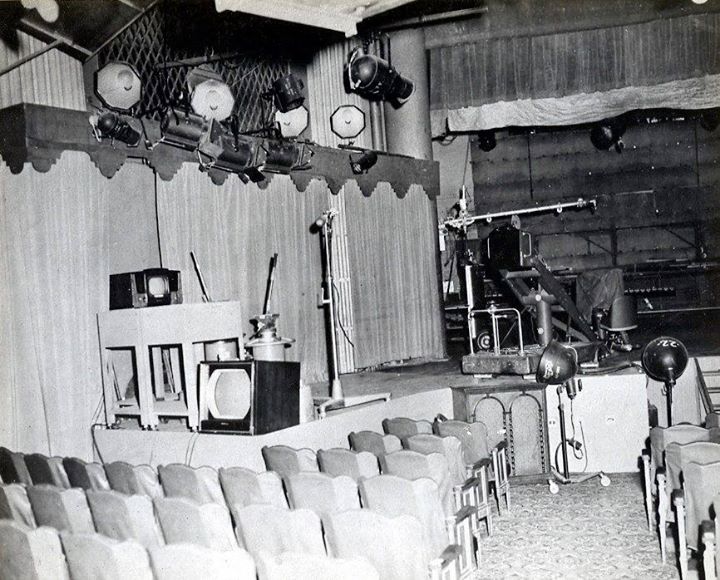
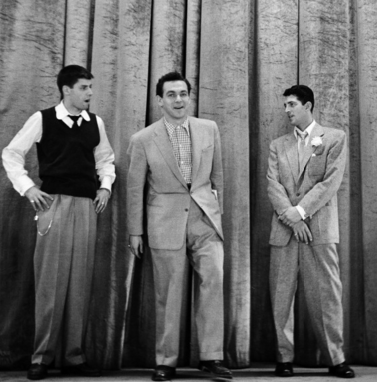
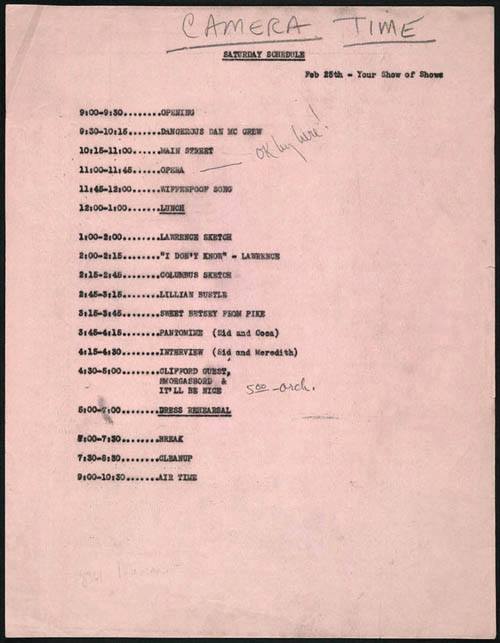
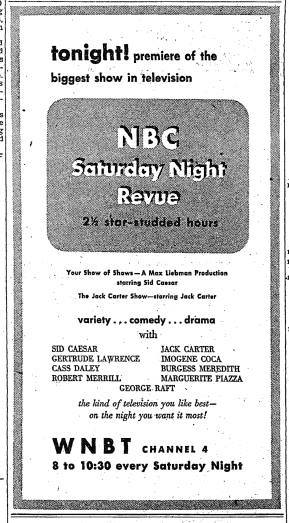
Page 3 of 136
« Previous
1
2
3
4
5
6
7
8
9
10
11
12
13
14
15
16
17
18
19
20
21
22
23
24
25
26
27
28
29
30
31
32
33
34
35
36
37
38
39
40
41
42
43
44
45
46
47
48
49
50
51
52
53
54
55
56
57
58
59
60
61
62
63
64
65
66
67
68
69
70
71
72
73
74
75
76
77
78
79
80
81
82
83
84
85
86
87
88
89
90
91
92
93
94
95
96
97
98
99
100
101
102
103
104
105
106
107
108
109
110
111
112
113
114
115
116
117
118
119
120
121
122
123
124
125
126
127
128
129
130
131
132
133
134
135
136
Next » 